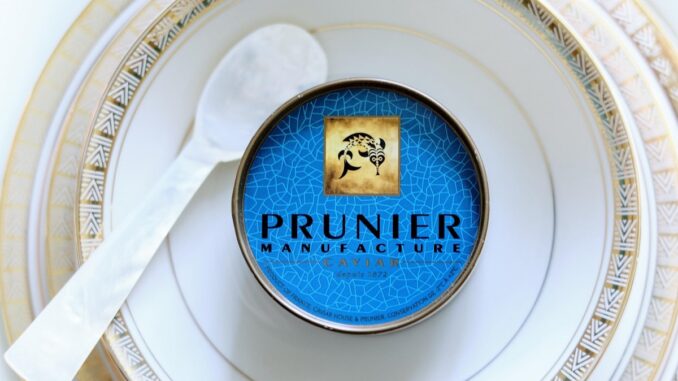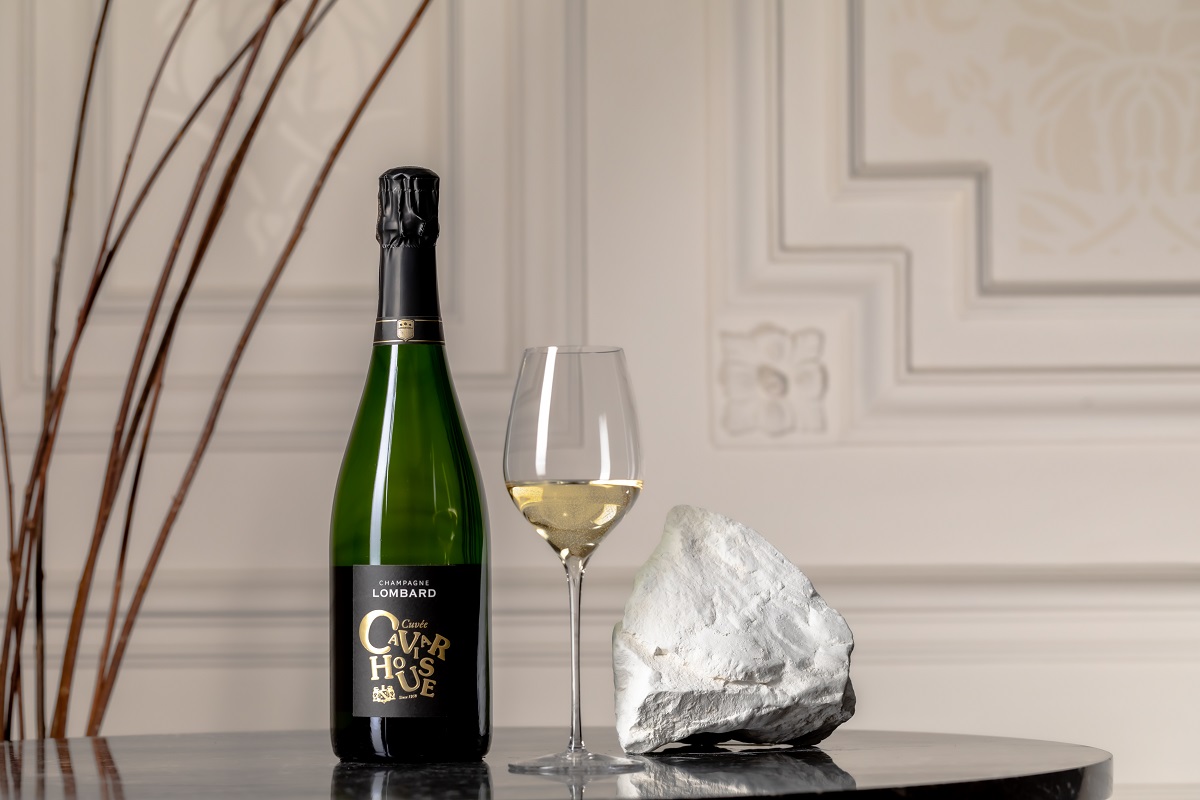
Of all the supposedly status-enhancing things you see behind people in Zoom and Team calls these days, you rarely see a stack of carefully curated caviar cans.
Rows of impressive, intelligence-flattering books, the odd could-be Ming dynasty vase but never any Caviar House & Prunier tins.
In 2007 Caviar House & Prunier launched its limited edition vintage-style YSL LOVE caviar tins. One came out every year, inspired by Yves St Laurent self-made greeting cards which he sent out to friends and business acquaintances from 1970. They became collectors’ items and the whole vintage collection has now been released.
Originally the tins contained YSL’s favourite Saint James caviar from Prunier. The latest designs contain the brand’s newest Oscietre Noir caviar farmed in the Dordogne. Showcasing over 12 designs with original drawings based on the theme of love, prices start for £195 for 50g.
Prunier was co-owned by Yves Saint Laurent and Pierre Berge.
Better known now perhaps for its airport seafood bars and luxury boutiques around the world, Prunier is one of the oldest farmed caviar brands. It was also the first to introduce sustainable sturgeon, being the first producer to obtain caviar from farmed sturgeons (in 1994) and creating a sustainable and safe alternative for endangered species in the Caspian Sea.
The business goes back to 1921 when Emile Prunier first served sturgeon roe in his Parisian restaurant.
There are currently seven Prunier caviars available, including three new Osciètre varieties. It also sells Balik salmon, farmed in Switzerland.
Once the contents have been consumed, the tins can be displayed as modern artwork and used as Zoom backgrounds. What has more cachet than caviar?
The brand is celebrating National Caviar Day this coming Tuesday 18th July with a champagne, vodka and canapes tasting at its 161 Piccadilly shop.
Store manager and the event’s official Caviar Master Chris Mehmet says:
“The evening begins with a glass of our brand Lombard champagne before you are guided through the nuances and complexity of a selection of caviars, their origins, how they are produced and best of all how they taste. We cleanse your palette in between with a traditional vodka aperitif. Then come the canapes and a farewell glass of champagne. Xmuse is our preferred vodka.
“This event is a perfect entry-level for anybody who has never tried caviar before but will likewise appeal to already devoted caviar lovers who wish to explore the world of caviar further.”

Caviar remains the signature Russian dish. Sturgeon is one of the planet’s oldest fish. It hasn’t always been a luxury gourmet item or highly priced delicacy. It was a peasant staple cooked with porridge. For centuries, Europe thought it inedible. It was cheaper than lard. The Russians knew it was nutritious. Caviar contains forty-seven vitamins and minerals and there are only 74 calories in an ounce which can cost $70.
The word “Caviar” may come from the Persian/Turkish “khya-aya”, meaning egg or egg-bearing. Or “chav-jar” – cake of power. The first people to discover sturgeon roes were the Azeris and Persians living on the Kura River in Azerbaijan. The Caspian Sea now accounts for 90 percent of the world’s caviar. Astrakhan on the River Volga and Anzali in northern Iran are considered the caviar capitals of the world. The main consumers of caviar in old Russia were the czars during the Russian Empire.
Every year, Czar Nicholas II received 11 tonnes of sterlet caviar as tax from the fishermen of Astrakhan and Azerbaijan which became a part of the Russian Empire after the Russian-Persian war.
There are many other caviars. The Danes have lampsucker caviar. Scandinavians have burbot and vendace roe. Asia has caplin and Japan ikura salmon roe. Spain even has caviar farms. There are over 20 species of sturgeon. The most prized caviar is ‘black caviar’ (tchernaya ikra), which comes from three kinds of sturgeon: the Osseter, the Beluga and the Sevruga. Red caviar comes from salmon trout or lumpfish. Pink caviar comes from herring. Snails also produce caviar. Italy has a thriving sturgeon egg industry.
Beluga is the largest sturgeon at 4 metres. It can weigh as much as 2000 pounds and is the rarest. You can recognise Beluga caviar by the eye or berry in the middle. Osetra eggs are dark grey and brown.
The true sturgeon connoisseur also knows and makes it known that the Beluga has a high nose and Sevruga has a thin beak.
Creating the impression you are a caviar savant and can afford to eat caviar is just as effective as having the conspicuous but not authentic Mensa certificate or the forged Harvard Business School diploma on the wall behind you during video conference calls.
A backdrop of luxury caviar helps convey the impressions that you are a person worth knowing. A person of refinement, both professional and trustworthy. Someone who appreciates the good things in life and has mastered the art of living.
It creates a more positive impression than a neglected yucca plant, the complete works of Daniel Steele and the framed selfie with Sir Alex Ferguson. Caviar spells success. Essential to achieve that WFH Look on Skype.
Prunier Caviar is the best personal brand builder. Especially if it is teamed with a big Harrods bag and a bottle of Prunier Champagne Brut. Just in shot. But unmissable.
Although tickets for the Caviar Masterclass on the 18th July 2023 are now sold out, you can find out more about Caviar House & Prunier here: www.caviarhouse-prunier.co.uk.
Author Bio:
Kevin Pilley is a former professional cricketer and chief staff writer of PUNCH magazine. His humour, travel, food and drink work appears worldwide and he has been published in over 800 titles.
Photographs courtesy of Caviar House & Prunier


Be the first to comment